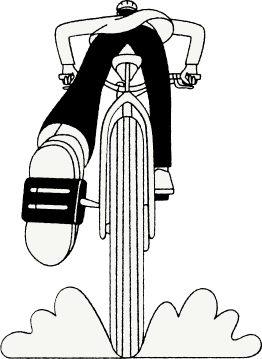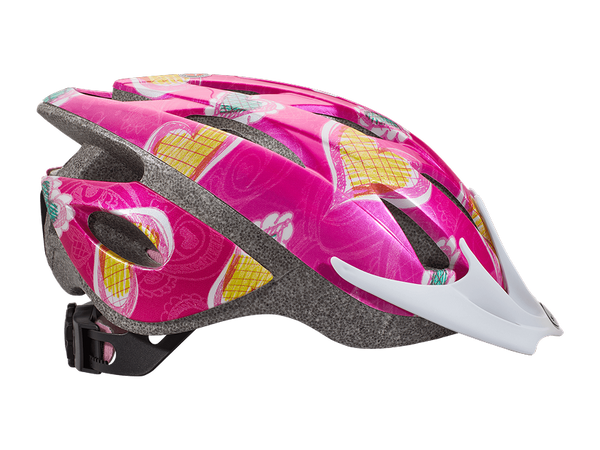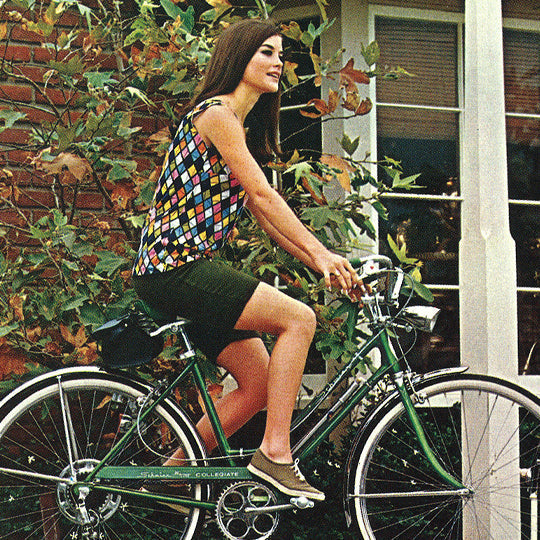In honor of Black History Month, we’re shining a spotlight on the one, the only, the greatest: Major Taylor. Who was Major Taylor? We’re so glad you asked. Major Taylor was an early 20th-century African American cyclist and the greatest sprinter of all time. He won numerous competitions and world titles, set multiple world records, and was one of the very first Black celebrity athletes.
Let’s take a closer look.
Early Life
Marshall Walter "Major" Taylor was born on November 26, 1878, in Indianapolis, Indiana. His parents, Gilbert and Saphronia (Kelter) Taylor, had eight children, and money was tight. But then it just so happened that young Marshall was gifted a bicycle by his father’s employer. Little did anyone know just how far cycling would take him.
By the early 1890s, Taylor was already a skilled trick rider. He was hired by a local bike shop owner to perform tricks outside the shop while wearing a military uniform (thus the nickname ‘Major’) as a form of advertising. Through that job, Taylor befriended a bike racer by the name of Louis Munger, who got him into racing and persuaded him to move to Worcester, Massachusetts. It was from there that Taylor’s career was about to take off.

The Star Athlete
Taylor started competing in amateur races as early as 1890 and won his first significant race in 1895: a 75-mile road race where he was the only rider to complete it. With that feat under his belt, and some encouragement from Munger, it was time to take the next step.
Taylor went pro in 1896, at just 18 years old, by participating in a six-day race at Madison Square Garden in New York City. It did not take long before he was hailed as the “most formidable racer in America.” Taylor was referred to as the “Black Cyclone” by the press, and even President Theodore Roosevelt was a fan.
In 1899, Taylor won the World Cycling Championship one-mile sprint – making him only the second Black athlete to win a world title in a recognized sport. The first being George Dixon, a Canadian bantamweight boxer.
But he was just getting started. In 1898 – 1899 alone, Taylor established seven world records:
- Quarter mile
- One-third mile
- Half-mile
- Two-third mile
- Three-quarter mile
- One mile
- Two mile
In 1900, Taylor became the American sprint champion and spent the next several years racing in Europe and Australia, with numerous wins. During that time, things were looking up in his personal life as well. In 1902, Taylor married Daisy Morris, and together they welcomed a daughter, Sydney, in 1904.
However, despite all his great success, Taylor still faced many challenges – not all of them athletic.
Challenges
Racism was rife in the world of cycling around the turn of the 20th century. Black riders like Taylor were often excluded from racing, either by the organization or by white cyclists who would refuse to compete against them. But that wasn’t all. When Taylor was permitted to race, he often had to deal with insults, fouls, and outright sabotage (like ice water thrown on him, and nails on the track) perpetrated by both competitors and spectators.
One of the worst incidents was in 1897. In a one-mile race, Taylor placed second, and a cyclist named William Becker was third. After the race, as reported in the New York Times, Becker “wheeled up behind Taylor and grabbed him by the shoulder. The colored man was thrown to the ground, Becker choked him into a state of insensibility, and the police were obliged to interfere.”
The overt racism against Taylor certainly took a toll, particularly in terms of physical and mental strain. Because of this, Taylor did not encourage others to follow in his footsteps. He did not want others to experience the hostility he had had to endure.
Even so, he was resilient. “Life is too short for a man to hold bitterness in his heart,” he wrote in his autobiography. And so he kept going.
Retirement & Death
Taylor retired from professional cycling in 1910 at the age of 32. Though he was still performing well, he felt that age was catching up with him. His very last competition was in an “old timers” race in 1917.
After he left professional cycling, Taylor fell onto hard times. There were various business ventures, none of which became profitable. There were also bad investments, including a self-published autobiography. Then, of course, the stock market crashed in 1929. The financial hardship and stress were significant, and around that time, Taylor became estranged from his wife and daughter.
By 1930, Taylor was living at a YMCA Hotel in Chicago, trying to sell copies of his autobiography door-to-door. He suffered a heart attack in March of 1932. He survived thanks to a successful operation but remained in poor health. Marshall “Major” Taylor died in the Cook County Hospital’s charity ward on June 21, 1932, at the age of 53.
Unfortunately, due to their estranged relationship, Taylor’s wife and daughter did not know of his death at first. Therefore, Taylor was initially buried at Mount Glenwood Cemetery near Chicago in an unmarked pauper’s grave. However, he wouldn’t be staying there.
In 1948, a group of cyclists got together to give Major Taylor a proper burial. The group included former cycling stars and members of the Olde Tymers Athletic Club of South Wabash Avenue YMCA. Armed with funds donated by Frank W. Schwinn (head of the Schwinn Bicycle Company at the time), they organized Taylor’s exhumation and reburial in a more prominent location of the same cemetery. They added a plaque that reads:

Legacy
There are now numerous monuments, buildings, streets, clubs, and races named for the great Major Taylor. He’s even the namesake of our Marshall e-bike. His towering athletic achievements – won in the face of adversity (and outright hostility) – paired with his courage and grace, makes Marshall Walter "Major" Taylor one of the finest sportsmen in history. Now gone, but never forgotten.
Continued Reading
Major Taylor, World Champion Bicyclist - The New York Times (nytimes.com)
The Unknown Story of "The Black Cyclone," the Cycling Champion Who Broke the Color Barrier | History| Smithsonian Magazine
The “Fastest Bicycle Rider in the World:” Marshall Walter “Major” Taylor (1878-1932) | Hoosier State Chronicles: Indiana's Digital Newspaper Program
Major Taylor bike exhibit races into Indiana Museum, celebrates Black cycling legend - Bikerumor













